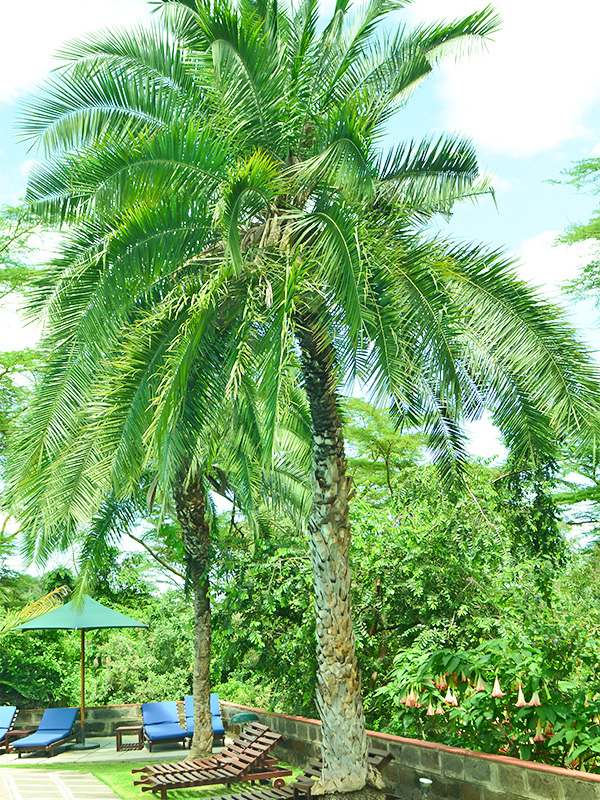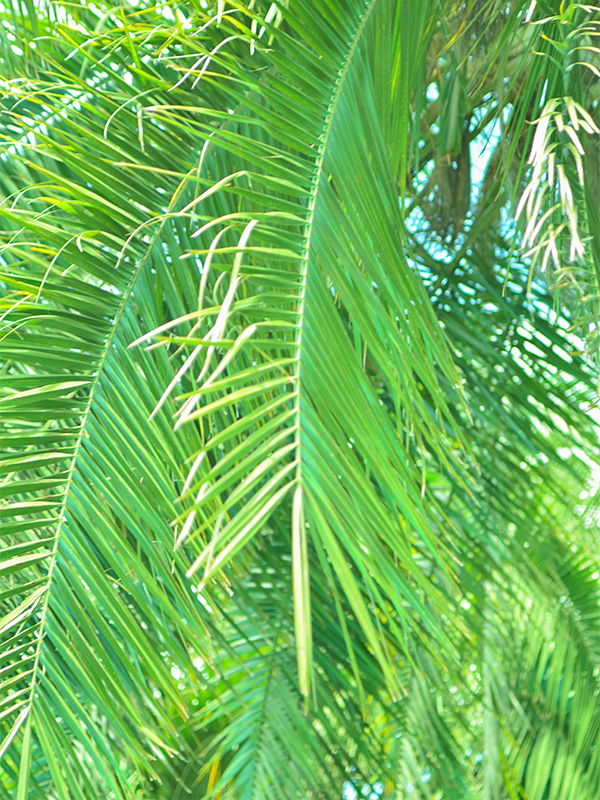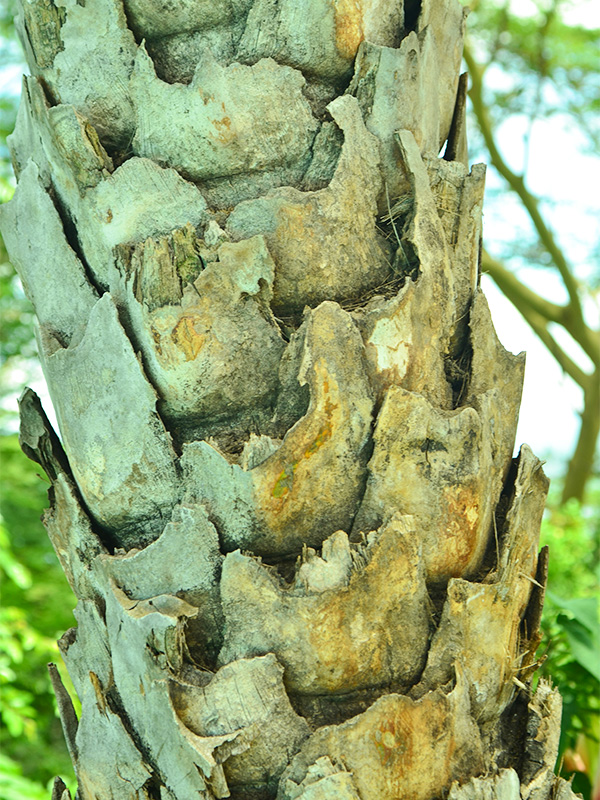
Tropicals, Woody > Phoenix > Phoenix reclinata > Phoenix reclinata
Phoenix reclinata
Wild Date Palm
Origin: Native to Tropical Africa.
| Family |
| Arecaceae |
| Genus |
| Phoenix |
| Species |
| reclinata |
| Category |
| Tropicals, Woody |
| Type |
| Tree (evergreen) |
| USDA Hardiness Zone |
| 9 - 11 |
| Canadian Hardiness Zone |
| Use as a conservatory plant. |
| RHS Hardiness Zone |
| H4 |
| Temperature (°C) |
| -4 |
| Temperature (°F) |
| 25 |
| Height |
| 3 - 12 m |
| Spread |
| 12 - 20 m |
Photographs
Description and Growing Information
Flowering Period
| Landscape |
| Used as specimen tree, wildlife habitat, container plant and as an ornamental tree. |
| Cultivation |
| Full sun to partial-shade. Tolerant to light frost, waterlogged conditions, salt-spray and moderate drought. Prefers sand or loam soils with a neutral pH. |
| Shape |
| Pinnate and recurved leaves that have a feather like shape. Fruits are oval and small. |
| Growth |
| Fast |
| Pests |
| Larvae and Zophopetes dysmephilai. |
| Bark/Stem Description |
| Has harsh leaf scars. |
| Flower/Leaf Bud Description |
| Located at the top. |
| Leaf Description |
| Big, feather-like shape, multi stemmed leaves with 50 petiole on each side that are 3 - 4 m long. |
| Flower Description |
| Inflorescence appears near the apex of the stem. |
| Fruit Description |
| Small oval shape (dates) and appears in clusters. The dates are quite fleshy and can reach 4 cm in length and has one seed inside. |
| Colour Description |
| The bark is brownish-grey in colour. The leaves are dark green. Male florets are yellow and female florets are yellowish-green. The date stem is yellow. The dates are yellow when young and as they mature become brown. |
| Texture Description |
| Coarse. The date stem is thick. |
| Propagation |
| Seeding and suckers. |
| Ethnobotanical Uses (Disclaimer) |
| Used to make mats, baskets, hats and brooms. Palm wine is produced using the sap. The fruits are edible and taste similar to commercial dates. |


